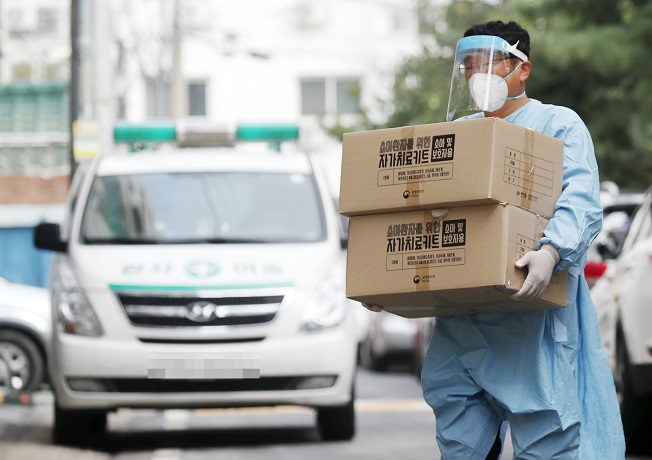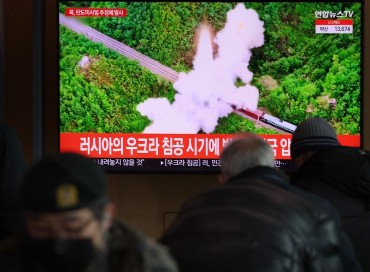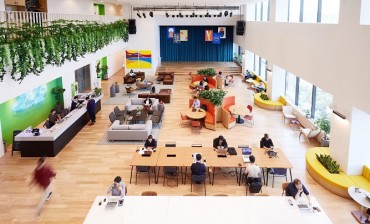SEOUL, Oct. 20 (Korea Bizwire) — South Korea saw its new coronavirus cases rise by nearly 500 cases Wednesday, but the caseload stayed below 2,000 for the 12th straight day, as the country continued its vaccine campaign aimed at returning to normalcy.
The country reported 1,571 new cases, including 1,556 local infections, raising the total caseload to 346,088, the Korea Disease Control and Prevention Agency (KDCA) said.
Wednesday’s tally is up by 498 from the 1,073 counted the previous day.
The death toll came to 2,698, up nine from a day earlier.
Daily virus caseloads tend to fluctuate depending on the number of coronavirus tests, which generally decrease during weekends and holidays.
Later in the day, health authorities and local governments reported 1,256 new cases as of 9 p.m., down 245 from the same time the previous day. Daily cases are counted until midnight and announced the following morning.
Of those, 987 cases, or 78.6 percent, were identified in the densely populated greater Seoul area.
The fourth wave of the pandemic peaked in late September with more than 3,200 daily cases reported, but since then, infections have shown a downward trend.
New daily cases have been under 2,000 for 12 consecutive days, largely thanks to rising vaccination rates.
As of Wednesday, 66.7 percent of the 52 million population were fully vaccinated, while 78.9 percent had received their first shot. In early July, the full vaccination rate stood at about 10.6 percent.
Over 70 percent of South Koreans are expected to be fully vaccinated by the end of this month, which the government believes is a precondition for the resumption of pre-pandemic life.
A total of 50,708 teenagers aged 16-17, the age group that began receiving vaccinations Monday, have received their first shot of the Pfizer vaccine. Vaccinations for pregnant women also started on the same day and 438 people have received their first jab.
KDCA Commissioner Jeong Eun-kyeong said during a parliamentary audit session that she expected the country to reach the 70 percent vaccination rate at around Oct. 23-25.

A health worker carries “self-treatment kits” for the coronavirus in Incheon, 40 kilometers west of Seoul, on Oct. 19, 2021. They will be used by people infected with the coronavirus who have no symptoms or mild ones and are taking care of themselves at home. (Yonhap)
The highly infectious delta variant is now the dominant form of the coronavirus, taking up 100 percent of the variants found in 3,245 locally infected COVID-19 patients last week.
The number of breakthrough infections came to 16,972, or 0.073 percent of the fully vaccinated populations.
Beginning this week, the restrictions on private gatherings have been lifted to allow up to eight people in Seoul and its surrounding areas to meet, provided that four of them are fully vaccinated.
A maximum of 10 people, including six fully vaccinated, are allowed to gather in other regions.
The eased rules will be in effect until the end of this month in what the authorities said would be the last adjustment of social distancing as the country is due to introduce the “living with COVID-19″ scheme.
Health Minister Kwon Deok-cheol told parliament the government is considering moving into the scheme on Nov. 1, under which COVID-19 will be treated as an infectious respiratory disease, like seasonal influenza, with eased distancing being implemented.
Of the locally transmitted cases, Seoul reported 504 new cases, with the surrounding Gyeonggi Province adding 588 and Incheon, 40 kilometers west of Seoul, 109 cases. The areas took up 76.6 percent of the total.
The number of new imported cases came to 15, raising the total to 14,880.
The number of patients released from quarantine after making full recoveries stood at 316,607, up by 3,175 from the previous day, the KDCA said.
Meanwhile, the KDCA corrected the country’s total virus caseload by one due to a duplication of the collected data.
(Yonhap)







